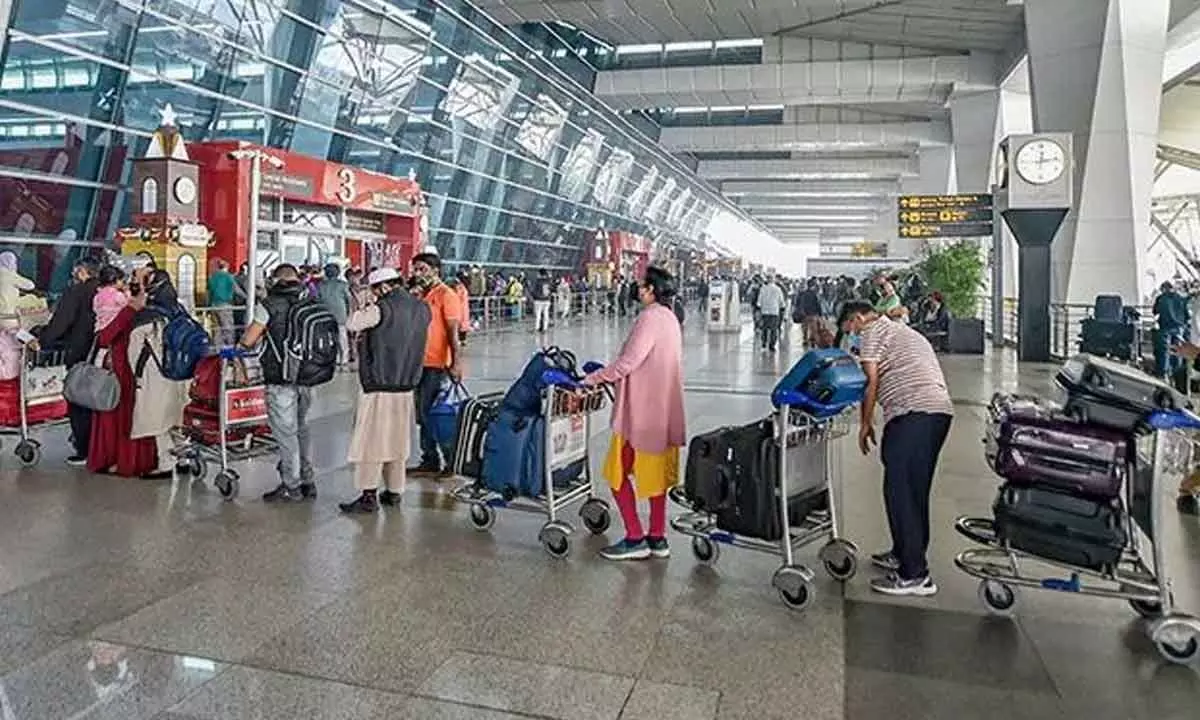Strategic investments in infrastructure and services can boost revenues of airports
Net profits of the airline industry are expected to reach $25.7 billion this year
image for illustrative purpose

Airports are dynamic environments with a constant flow of passengers, providing excellent opportunities for advertising and marketing. Digital directory screens serve a dual purpose, acting as a versatile platform for providing maps with directions and displaying targeted advertisements
The Airports Council International (ACI) World, has predicted that 2024 will be a milestone year for global passenger traffic, with global air travel reaching 9.4 billion passengers. To handle this growing volume of travellers, airports must address turbulence on the ground by further improving the airport experience. As they seek to enhance the traveller experience in a way that simultaneously drives new revenue, airports across the globe can leverage three technology trends to pave the runway.
The overall revenues are expected to rise faster this year compared to the expenses (7.6% vs. 6.9%), strengthening prospects of profitability. While operating profits are expected to increase by 21.1% ($40.7 billion in 2023 to $49.3 billion in 2024), net profit margins increased at less than half the pace (10%) largely due to increased interest rates expected in 2024.
Airline industry net profits are expected to reach $25.7 billion in 2024 (2.7% net profit margin). This will be a slight improvement over 2023 which is expected to show a $23.3 billion net profit (2.6% net profit margin).
In both 2023 and 2024 return on invested capital will lag the cost of capital by 4p.p. as interest rates around the world have risen in response to the sharp inflationary impulse.
Airline industry operating profits are expected to reach $49.3 billion in 2024 from $40.7 billion in 2023. The total revenues in 2024 are expected to grow 7.6% year over year to a record $964 billion. Expense growth is expected to be slightly lower at 6.9% for a total of $914 billion.
Some 4.7 billion people are expected to travel in 2024, a historic high that exceeds the pre-pandemic level of 4.5 billion recorded in 2019, while cargo volumes are expected to be 58 and 61 million tonnes in 2023 and 2024, respectively.
The industry revenues are expected to reach an historic high of $964 billion in 2024. An inventory of 40.1 million flights is expected to be available in 2024, exceeding the 2019 level of 38.9 million and up from the 36.8 million flights expected in 2023.
“Considering the major losses of recent years, the $25.7 billion net profit expected in 2024 is a tribute to aviation’s resilience. People love to travel and that has helped airlines to come roaring back to pre-pandemic levels of connectivity. The speed of the recovery has been extraordinary; yet it also appears that the pandemic has cost aviation about four years of growth. From 2024 the outlook indicates that we can expect more normal growth patterns for both passenger and cargo,” said Willie Walsh, IATA’s Director General.
Airports are dynamic environments with a constant flow of passengers, providing excellent opportunities for advertising and marketing. Digital directory screens serve a dual purpose, acting as a versatile platform for providing maps with directions and displaying targeted advertisements. This approach effectively connects businesses with an engaged audience in high-traffic airport locations and provides an additional revenue stream for airport operators.
A successful airport adeptly balances its revenue streams, encompassing aeronautical activities such as landing fees and aircraft services alongside non-aeronautical sources such as retail, dining and advertising. This equilibrium guarantees financial resilience and sustainability. Yet, it is not only about financial success; thriving airports prioritize passenger experiences, aiming to make each journey as smooth and enjoyable as possible by offering top-notch services and amenities.
Airports play a pivotal role in regional economic development by creating job opportunities, attracting businesses, and boosting tourism in the surrounding areas. They achieve profitability through a multifaceted approach. They optimize various revenue sources, including parking, retail, dining, and advertising, ensuring a consistent flow of income. Cost management is equally vital; by efficiently handling operating costs, airports can enhance their profitability. Additionally, strategic investments in infrastructure and services are integral when it comes to attracting airlines, passengers, and businesses, thereby boosting revenue.
Asia-Pacific region has experienced the strongest growth in airline revenue in 2023, with growth accounting for half of the 47% global increase to $642bn. Profitability is also returning to the region.
Asia-Pacific airlines saw a 45.4% increase in January 2024 traffic compared to January 2023, continuing the region’s rapid recovery after the lifting of pandemic restrictions. The capacity climbed 48.1% and the load factor fell by 1.5 percentage points to 82.6%.
“Industry profits must be put into proper its perspective. While the recovery is impressive, a net profit margin of 2.7% is far below what investors in almost any other industry would accept. But it is far too little to build a future that is resilient to shocks for a critical global industry on which 3.5% of GDP depends and from which 3.05 million people directly earn their livelihoods,” says Walsh.

